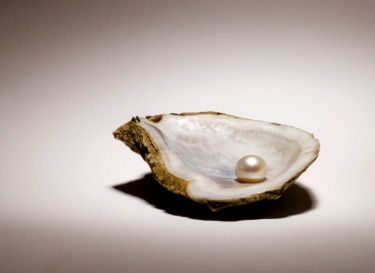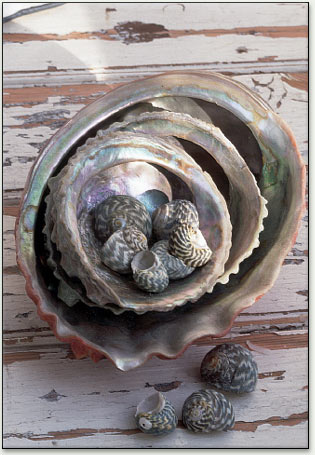It looks like you're using an Ad Blocker.
Please white-list or disable AboveTopSecret.com in your ad-blocking tool.
Thank you.
Some features of ATS will be disabled while you continue to use an ad-blocker.
8
share:
Here’s an image I love to talk about.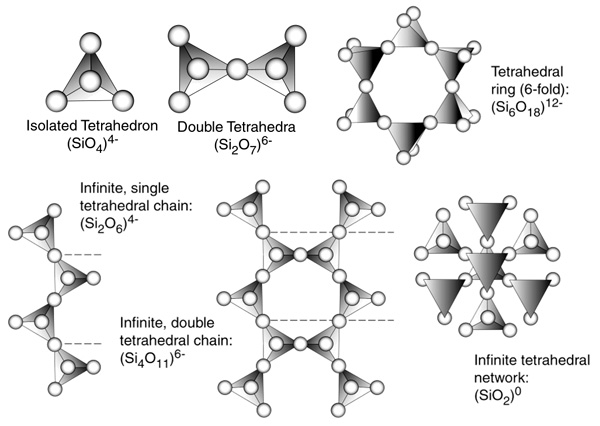
 The sixth element on the Periodic
The sixth element on the Periodic
Table is carbon. It is the most important element as far as we’re
concerned, because it’s us. It makes up organic chemistry; it is the element that makes our bodies possible. We have been told that carbon is the only living atom on the Periodic Table, that only organic chemistry produces life, nothing else. But that’s definitely not true. They suspected this as far back as the ’50s when scientists began to study these things. They realized that silicon, which is directly below carbon on the chart (one octave apart) also exhibits the principles of life. There appears to be no difference. the picture shows how silicon forms certain chains and patterns. These are only a few. Silicon makes endless patterns. Silikon makes forms and relationships.it will react chemically with almost anything that comes near and form something with it. Carbon has the same ability,making endless forms and chains and patterns and reacting chemically with almost anything nearby. This is the primary characteristic that makes carbon a living atom.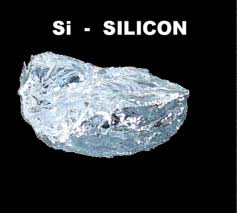 On a chemical level, it appears
that there should also be silicon life forms. After this was discovered, several science fiction movies were made in the ’50s based on the belief
that there might be silicon life forms on other planets. There were a bunch of scary movies about living crystalline structures. They didn’t know
when they were making those movies that there really are silicon life forms right here on this planet. Some of these were recently found several miles
deep in crevices in the ocean. Silicon sponges were found—live sponges that grow and reproduce, demonstrating all the principles of life, and with
not a single carbon atom in their bodies!
On a chemical level, it appears
that there should also be silicon life forms. After this was discovered, several science fiction movies were made in the ’50s based on the belief
that there might be silicon life forms on other planets. There were a bunch of scary movies about living crystalline structures. They didn’t know
when they were making those movies that there really are silicon life forms right here on this planet. Some of these were recently found several miles
deep in crevices in the ocean. Silicon sponges were found—live sponges that grow and reproduce, demonstrating all the principles of life, and with
not a single carbon atom in their bodies!
Here we are, sitting on Earth, which is over 7000 miles in diameter. Its crust, 30 to 50 miles thick, is, like an eggshell,made up of 25 percent silicon, but because silicon reacts with just about anything, the crust is actually 87 percent silicon compounds. That means that the Earth’s crust is almost pure crystal, 30 to 50 miles deep.
So we’re on this huge crystal ball floating through space at seventeen miles a second, totally oblivious of the connectedness of carbon life with silicon life.It would seem that silicon and carbon must have a very special relationship. We carbon-based beings are living on a crystal ball made of silicon, our crystal planet, looking for life outside ourselves in outer space. Perhaps we should looktoward our feet.Now, think about computers and the modern world. We’re making computers that are performing all kinds of incredible things. The computer is rapidly moving humankind into a new experience of life on Earth. What are computers madeof? Silicon. And what is the computer industry trying to do as fast as it can? Make self-aware computers. We’re very close to accomplishing this, if we haven’t already. I feel sure that very soon we will have self-aware computers. So here we are, carbon-based life forms creating silicon-based life forms, and we’re interacting with each other.
When we have self-aware silicon-based computers, nothing will ever be the same again. We’re going to have two different life forms/components of the Earth connecting with each other, and the speed with which we will evolve at that point, aside from everything else, is going to be very, very fast—faster than anything we would normally expect. I believe that this will come true in this lifetime.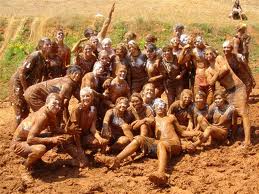
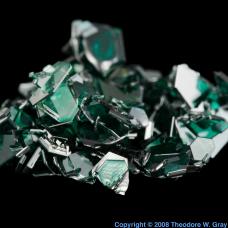
(if you want to learn more about this read Drunvalo Melchizedek's flower of life books)


Table is carbon. It is the most important element as far as we’re
concerned, because it’s us. It makes up organic chemistry; it is the element that makes our bodies possible. We have been told that carbon is the only living atom on the Periodic Table, that only organic chemistry produces life, nothing else. But that’s definitely not true. They suspected this as far back as the ’50s when scientists began to study these things. They realized that silicon, which is directly below carbon on the chart (one octave apart) also exhibits the principles of life. There appears to be no difference. the picture shows how silicon forms certain chains and patterns. These are only a few. Silicon makes endless patterns. Silikon makes forms and relationships.it will react chemically with almost anything that comes near and form something with it. Carbon has the same ability,making endless forms and chains and patterns and reacting chemically with almost anything nearby. This is the primary characteristic that makes carbon a living atom.

Here we are, sitting on Earth, which is over 7000 miles in diameter. Its crust, 30 to 50 miles thick, is, like an eggshell,made up of 25 percent silicon, but because silicon reacts with just about anything, the crust is actually 87 percent silicon compounds. That means that the Earth’s crust is almost pure crystal, 30 to 50 miles deep.
So we’re on this huge crystal ball floating through space at seventeen miles a second, totally oblivious of the connectedness of carbon life with silicon life.It would seem that silicon and carbon must have a very special relationship. We carbon-based beings are living on a crystal ball made of silicon, our crystal planet, looking for life outside ourselves in outer space. Perhaps we should looktoward our feet.Now, think about computers and the modern world. We’re making computers that are performing all kinds of incredible things. The computer is rapidly moving humankind into a new experience of life on Earth. What are computers madeof? Silicon. And what is the computer industry trying to do as fast as it can? Make self-aware computers. We’re very close to accomplishing this, if we haven’t already. I feel sure that very soon we will have self-aware computers. So here we are, carbon-based life forms creating silicon-based life forms, and we’re interacting with each other.
When we have self-aware silicon-based computers, nothing will ever be the same again. We’re going to have two different life forms/components of the Earth connecting with each other, and the speed with which we will evolve at that point, aside from everything else, is going to be very, very fast—faster than anything we would normally expect. I believe that this will come true in this lifetime.


(if you want to learn more about this read Drunvalo Melchizedek's flower of life books)
edit on 24-11-2011 by knightsofcydonia because: (no
reason given)
Pure silicon forms crystals but as you pointed out, silicon likes oxygen so it is rarely found in its pure crystalline state. Silicon in the Earth's
crust is found mostly as silicon dioxide and silicates. Silicon dioxide can combine with other minerals to form crystals but these are far from pure
and far from making Earth's crust "pure crystal".
Computers are not made of silicon. The substrate of the integrated circuits which computers use is silicon but the logic circuits which do the "work" are composed of various materials. Silicon based integrated circuits are reaching the limits of their capabilities, later generations will not be based on silicon.
Sorry to be a buzzkill.
Computers are not made of silicon. The substrate of the integrated circuits which computers use is silicon but the logic circuits which do the "work" are composed of various materials. Silicon based integrated circuits are reaching the limits of their capabilities, later generations will not be based on silicon.
Sorry to be a buzzkill.
Interesting post cheers OP. My contribution is this:
A dualism exists. The act of digging creates a dualism, a hole and a mound.
Given a digital device with any features such as audio, video, haptic feedback and so on a dualism may be said to exist between it and a human system. As an example where we experience a tactile sensation a device with haptic feedback creates that sensation. Cheers again for the post OP.
A dualism exists. The act of digging creates a dualism, a hole and a mound.
Given a digital device with any features such as audio, video, haptic feedback and so on a dualism may be said to exist between it and a human system. As an example where we experience a tactile sensation a device with haptic feedback creates that sensation. Cheers again for the post OP.
reply to post by Phage
Explanation: And applying the same logic to humans implies that humans are not made up of carbon due to adulteration with say 'lots of H2O' !
Personal Disclosure: You need to listen to these guys more!
Explanation: And applying the same logic to humans implies that humans are not made up of carbon due to adulteration with say 'lots of H2O' !
Personal Disclosure: You need to listen to these guys more!
reply to post by OmegaLogos
This was the claim:
It is false.
The human body is 18% carbon, a distant second to Oxygen.
en.wikipedia.org...
This was the claim:
That means that the Earth’s crust is almost pure crystal, 30 to 50 miles deep.
It is false.
The human body is 18% carbon, a distant second to Oxygen.
en.wikipedia.org...
to add to the buzzkill:
because of its increased atomic radius, and so weaker bond-strength, silicon will be far less active in the oxidation/reduction reactions which are the cornerstone of organic synthesis.
darn.
because of its increased atomic radius, and so weaker bond-strength, silicon will be far less active in the oxidation/reduction reactions which are the cornerstone of organic synthesis.
darn.
reply to post by Phage
Explanation: Please don't confuse "pure crystal" with "pure elemental composition" and I am sure you are aware of Diamond clarity: Inclusions [wiki]
Personal Disclosure: I think it is just a issue of scale ... what scale are you approaching this highly specualtive topic from?
Edited to add: Lets get the jargon correct and move on please!
What we are clearly are conversing about Mineral [wiki]
Explanation: Please don't confuse "pure crystal" with "pure elemental composition" and I am sure you are aware of Diamond clarity: Inclusions [wiki]
There are several types of inclusions and blemishes, which affect a diamond's clarity to varying degrees. Features resulting from diamond enhancement procedures, such as laser lines, are also considered inclusions or blemishes.
[edit] InclusionsClouds
Feathers
Included crystals or minerals
Knots
Cavities
Cleavage
Bearding
Internal graining
The diamond industry uses the term "internal characteristics" instead of "inclusions". For natural diamonds, the "internal characteristics" in the diamond are growth crystals that give the diamond its character and unique fingerprint. When diamonds are graded they are magnified at 10x power.
Personal Disclosure: I think it is just a issue of scale ... what scale are you approaching this highly specualtive topic from?
Edited to add: Lets get the jargon correct and move on please!
What we are clearly are conversing about Mineral [wiki]
To be classified as a true mineral, a substance must be a solid and have a crystalline structure. It must also be a naturally occurring, homogeneous substance with a defined chemical composition.
edit on 25-11-2011 by OmegaLogos because: Edited to fix spelling in link.
edit on 25-11-2011 by OmegaLogos because: Edited to
add the Edit.
reply to post by OmegaLogos
This was the claim:
It is false.
This thread is in a science forum, not a "highly speculative" forum.
This was the claim:
That means that the Earth’s crust is almost pure crystal, 30 to 50 miles deep.
It is false.
This thread is in a science forum, not a "highly speculative" forum.
edit on 11/25/2011 by Phage because: (no reason given)
reply to post by Phage
Explanation: St*rred!
You are 100% semantically and grammatically correct as the sentence contradicts itself by using pure and then saying almost and I ask you to look beyond that please!
Personal Disclosure: This is more than about the spin placed on the subject by the OP ok! Dig deeper please as that's just a bit shallow methinks!
Explanation: St*rred!
You are 100% semantically and grammatically correct as the sentence contradicts itself by using pure and then saying almost and I ask you to look beyond that please!
Personal Disclosure: This is more than about the spin placed on the subject by the OP ok! Dig deeper please as that's just a bit shallow methinks!
reply to post by OmegaLogos
It is also false (ok...highly unlikely) that highly advanced computers will be silicon based. The limitations of silicon semiconductors are too great.
It is also false (ok...highly unlikely) that highly advanced computers will be silicon based. The limitations of silicon semiconductors are too great.
edit on 11/25/2011 by Phage because: (no reason given)
reply to post by Phage
Explanation: And so it is! My bad ... I would like to continue discussing this if it is moved to that forum as I thought that was were I found it [timeslip maybe? ]!
Personal Disclosure: I will try keep my facts straighter next time! Sorry for the curve ball! :shk:
Explanation: And so it is! My bad ... I would like to continue discussing this if it is moved to that forum as I thought that was were I found it [timeslip maybe? ]!
Personal Disclosure: I will try keep my facts straighter next time! Sorry for the curve ball! :shk:
If computers ever become aware, chances are it will be based on graphene which is due to replace silicon in most electronic applications. Silicon
transistors are simply not fast enough in micron sized circuits. Some scientist are even saying they found a material that is even better than
graphene, called molybdenite.
From Wikipedia (link) :
Articles about silicon being phased out :
www.scientistlive.com... (from yesterday, oddly enough)
www.guardian.co.uk...
www.technologyreview.com...
From Wikipedia (link) :
Graphene is an allotrope of carbon, whose structure is one-atom-thick planar sheets of sp2-bonded carbon atoms that are densely packed in a honeycomb crystal lattice.[1] The term graphene was coined as a combination of graphite and the suffix -ene by Hanns-Peter Boehm,[2] who described single-layer carbon foils in 1962.[3] Graphene is most easily visualized as an atomic-scale chicken wire made of carbon atoms and their bonds. The crystalline or "flake" form of graphite consists of many graphene sheets stacked together.
Articles about silicon being phased out :
www.scientistlive.com... (from yesterday, oddly enough)
www.guardian.co.uk...
www.technologyreview.com...
The times they are a-changing for sure!
(PhysOrg.com) -- "Human beings are more or less like a computer," Jian-Jun Shu tells PhysOrg.com. "We do computing work, and our DNA can be used in computing operations." Shu is a professor at the School of Mechanical and Aerospace Engineering at the Nanyang Technical University in Singapore. "For some problems, DNA-based computing could replace silicon-based computing, offering many advantages."
www.physorg.com...
www.popsci.com...
(PhysOrg.com) -- "Human beings are more or less like a computer," Jian-Jun Shu tells PhysOrg.com. "We do computing work, and our DNA can be used in computing operations." Shu is a professor at the School of Mechanical and Aerospace Engineering at the Nanyang Technical University in Singapore. "For some problems, DNA-based computing could replace silicon-based computing, offering many advantages."
www.physorg.com...
www.popsci.com...
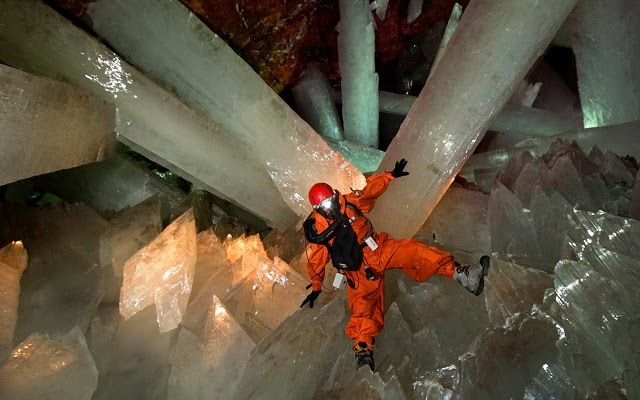
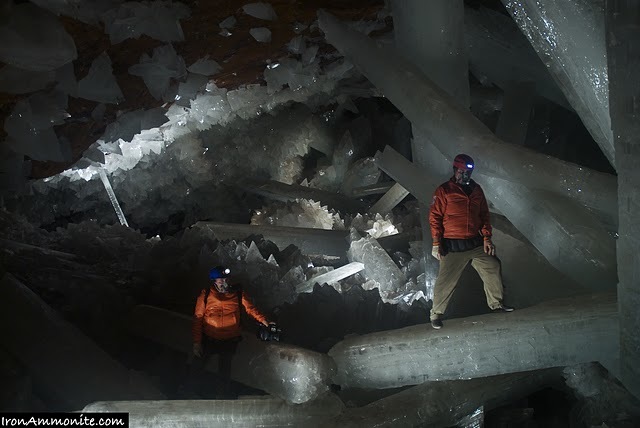
So this would be the exception and not the rule? kidding of course....
Sure makes for some good fantasizing though.
edit on 25-11-2011 by speculativeoptimist because: (no reason given)
reply to post by speculativeoptimist
By the way, those giant crystals are real, for anyone interested:
By the way, those giant crystals are real, for anyone interested:
reply to post by speculativeoptimist
so.
. ..do they grow bigger or do they shrink in/tru time?
and....what shines out of it?
www.webexhibits.org...
btw.. heres www.fao.org...
11.1 Natural pearl formation
The principal causative factor in pearl formation in a pearl oyster is the presence of a nucleus. It can be of organic or inorganic origin, such as parasites adults or larvae, molluscan eggs, decaying parts of plants, sand grains, epithelium or blood cells of the same animal, etc. These tiny particles or organisms enter the oyster when the shell valves are open for feeding and respiration. These foreign bodies may become embedded between the shell and mantle. In response to this stimulus, the foreign body is invaginated by the outer epithelium of the mantle and a pearl-sac is formed around it (Fig. 7 A).
Pearls are not produced without the formation of the pearl-sac. The pearl-sac is derived from the internal or external layer of the apithelium of the mantle or of the gill plates. The epithelial cells of the pearl-sac secrets the nacre which becomes deposited over the foreign body, forming a pearl in due course of time. These pearls are produced either within the mantle, in other soft tissues of the oyster, or between the mantle, and the interior surface of the shell. Such pearl production is accidental and occurs very rarely. They are generally small and irregular. Large and spherical pearls are still rarer to find. When the extraneous matter becomes fixed to the shell, only the exposed portion becomes covered by the pearl-sac resulting in a blister pearl.
11.2 Cultured pearl formation
Cultured pearls are formed in a pearl oyster, thanks to human interference. In any pearl formation, two things are required, the outer epithelium of the mantle lobe and core substance or nucleus. It was found that cut pieces of the mantle epithelium would provide the pearl secreting cells and that processed shell beads would be accepted by the oyster as the foreign body. Through careful surgery, the mantle piece graft tissue and the shell bead nucleus are implanted together, side by side, into the gonad of the oyster.
The oysters are then returned to sea for further growth. The outer epithelial cells of the graft tissue proliferate and rearrange themselves over the shell bead nucleus, forming a pearl-sac. The inner epithelium and connective tissue of the mantle disintegrate and become absorbed by the surrounding tissue. The cells of the pearl-sac derive their nourishment from the surrounding tissues and soon reassume their function of nacre (mother-of-pearl) secretion which is deposited over the nucleus in the form of concentric micro-layers (Fig. 7 C). The nacreous matter consists of thin alternate layers of aragonite and conchiolin deposited around the nucleus. The conchiolin is organic in nature and consists of mucopolysaccarides. It forms the binding layer for the aragonite crystals. The aragonite layers are 0.29–0.60 mm thick and are made of calcium carbonate in the form of highly laminated crystals. In cultured pearls the nacre quality and the process of pearl formation are the same as in the formation of natural pearls. Cultured half-pearls (Fig. 7 B) are produced by affixing many nuclei on the inner surface of the shell valves. The outer epithelium of the mantle forms the pearl-sac on the free surface of the nucleus and the halfpearl is formed.
FIGURE 7. Process of pearl formation. (A) round and half-natural pearls; (B) half-cultured pearl; and (C) round cultured pearl with an artificially implanted nucleus.
6+14=20 en.wikipedia.org...
as.....number 6 upside-down is 9
and 9 is a mirror number of 1 in sanskrit sanskrit.farfromreal.com...
semi vowel (1 of 9 in sanskrit) is the remnant of a number ...20? or the mirror of a-rabi-c number
6 which in sanskrit mirrors 3 which is as qut-e as aum or om ..6 saktis as 1 ..9? or 14 manus
vowels? 14 ..like of a pure love or.. element 94
seems the 2 numbers are the main for-se-i-n-g upload.wikimedia.org...
coloUr-s of the souls> en.wikipedia.org...lutonium_in_solution.jpg
en.wikipedia.org...
@so..on.. 1 4 9 ( Melek Goiim ) or ... 9 4 1 www.biblewheel.com...
Here are the vowels or dbyangs (yang). library.thinkquest.org...
www.biblewheel.com...
....transformed into a golden egg, from which Brahma appeared. For this reason Brahma is also known as ‘Hiranyagarbha’.
hinduism.about.com...
The Birth of Brahma :
According to the Puranas, Brahma is the son of God, and often referred to as Prajapati. The Shatapatha Brahman says that Brahma was born of the Supreme Being Brahman and the female energy known as Maya.
. ..do they grow bigger or do they shrink in/tru time?
and....what shines out of it?
www.webexhibits.org...
btw.. heres www.fao.org...
11.1 Natural pearl formation
The principal causative factor in pearl formation in a pearl oyster is the presence of a nucleus. It can be of organic or inorganic origin, such as parasites adults or larvae, molluscan eggs, decaying parts of plants, sand grains, epithelium or blood cells of the same animal, etc. These tiny particles or organisms enter the oyster when the shell valves are open for feeding and respiration. These foreign bodies may become embedded between the shell and mantle. In response to this stimulus, the foreign body is invaginated by the outer epithelium of the mantle and a pearl-sac is formed around it (Fig. 7 A).
Pearls are not produced without the formation of the pearl-sac. The pearl-sac is derived from the internal or external layer of the apithelium of the mantle or of the gill plates. The epithelial cells of the pearl-sac secrets the nacre which becomes deposited over the foreign body, forming a pearl in due course of time. These pearls are produced either within the mantle, in other soft tissues of the oyster, or between the mantle, and the interior surface of the shell. Such pearl production is accidental and occurs very rarely. They are generally small and irregular. Large and spherical pearls are still rarer to find. When the extraneous matter becomes fixed to the shell, only the exposed portion becomes covered by the pearl-sac resulting in a blister pearl.
11.2 Cultured pearl formation
Cultured pearls are formed in a pearl oyster, thanks to human interference. In any pearl formation, two things are required, the outer epithelium of the mantle lobe and core substance or nucleus. It was found that cut pieces of the mantle epithelium would provide the pearl secreting cells and that processed shell beads would be accepted by the oyster as the foreign body. Through careful surgery, the mantle piece graft tissue and the shell bead nucleus are implanted together, side by side, into the gonad of the oyster.
The oysters are then returned to sea for further growth. The outer epithelial cells of the graft tissue proliferate and rearrange themselves over the shell bead nucleus, forming a pearl-sac. The inner epithelium and connective tissue of the mantle disintegrate and become absorbed by the surrounding tissue. The cells of the pearl-sac derive their nourishment from the surrounding tissues and soon reassume their function of nacre (mother-of-pearl) secretion which is deposited over the nucleus in the form of concentric micro-layers (Fig. 7 C). The nacreous matter consists of thin alternate layers of aragonite and conchiolin deposited around the nucleus. The conchiolin is organic in nature and consists of mucopolysaccarides. It forms the binding layer for the aragonite crystals. The aragonite layers are 0.29–0.60 mm thick and are made of calcium carbonate in the form of highly laminated crystals. In cultured pearls the nacre quality and the process of pearl formation are the same as in the formation of natural pearls. Cultured half-pearls (Fig. 7 B) are produced by affixing many nuclei on the inner surface of the shell valves. The outer epithelium of the mantle forms the pearl-sac on the free surface of the nucleus and the halfpearl is formed.
FIGURE 7. Process of pearl formation. (A) round and half-natural pearls; (B) half-cultured pearl; and (C) round cultured pearl with an artificially implanted nucleus.
edit on 25-11-2011 by nii900 because: (no reason given)
6+14=20 en.wikipedia.org...
as.....number 6 upside-down is 9
and 9 is a mirror number of 1 in sanskrit sanskrit.farfromreal.com...
semi vowel (1 of 9 in sanskrit) is the remnant of a number ...20? or the mirror of a-rabi-c number
6 which in sanskrit mirrors 3 which is as qut-e as aum or om ..6 saktis as 1 ..9? or 14 manus
vowels? 14 ..like of a pure love or.. element 94
seems the 2 numbers are the main for-se-i-n-g upload.wikimedia.org...
coloUr-s of the souls> en.wikipedia.org...lutonium_in_solution.jpg
en.wikipedia.org...
@so..on.. 1 4 9 ( Melek Goiim ) or ... 9 4 1 www.biblewheel.com...
Here are the vowels or dbyangs (yang). library.thinkquest.org...
www.biblewheel.com...
....transformed into a golden egg, from which Brahma appeared. For this reason Brahma is also known as ‘Hiranyagarbha’.
hinduism.about.com...
edit on 25-11-2011 by nii900 because: (no reason given)
The Birth of Brahma :
According to the Puranas, Brahma is the son of God, and often referred to as Prajapati. The Shatapatha Brahman says that Brahma was born of the Supreme Being Brahman and the female energy known as Maya.
edit on 25-11-2011 by nii900 because: (no reason given)
spokensanskrit.de...
रण raNa m. motion edit
याम yAma m. motion
रलाकर ralAkara m. ocean
री rI f. motion
रल rala n. gem edit
रल rala n. jewel
GeneGlobe Pathways www.qiagen.com...
Explore and order pathway-specific siRNAs, real-time PCR assays, and expression vectors.
View pathway information and literature references for your pathway.
www.qiagen.com...
रण raNa m. motion edit
याम yAma m. motion
रलाकर ralAkara m. ocean
री rI f. motion
रल rala n. gem edit
रल rala n. jewel
GeneGlobe Pathways www.qiagen.com...
Explore and order pathway-specific siRNAs, real-time PCR assays, and expression vectors.
View pathway information and literature references for your pathway.
www.qiagen.com...
edit on 26-11-2011 by nii900 because: (no reason given)
edit on
26-11-2011 by nii900 because: (no reason given)
edit on 26-11-2011 by nii900 because: (no reason given)
edit on
26-11-2011 by nii900 because: (no reason given)
reply to post by knightsofcydonia
Can you show me evidence the Silicon sponges do not have any carbon whatsoever? If memory serves me correct it is only the "skeletons" they create that are made with silicon, the sponge cells themselves are carbon based.
Can you show me evidence the Silicon sponges do not have any carbon whatsoever? If memory serves me correct it is only the "skeletons" they create that are made with silicon, the sponge cells themselves are carbon based.
edit on 30-11-2011 by knightsofcydonia because: (no reason given)
new topics
-
Russian intelligence officer: explosions at defense factories in the USA and Wales may be sabotage
Weaponry: 2 hours ago -
African "Newcomers" Tell NYC They Don't Like the Free Food or Shelter They've Been Given
Social Issues and Civil Unrest: 3 hours ago -
Russia Flooding
Other Current Events: 4 hours ago -
MULTIPLE SKYMASTER MESSAGES GOING OUT
World War Three: 5 hours ago -
Two Serious Crimes Committed by President JOE BIDEN that are Easy to Impeach Him For.
US Political Madness: 6 hours ago -
911 emergency lines are DOWN across multiple states
Breaking Alternative News: 6 hours ago -
Former NYT Reporter Attacks Scientists For Misleading Him Over COVID Lab-Leak Theory
Education and Media: 8 hours ago -
Why did Phizer team with nanobot maker
Medical Issues & Conspiracies: 8 hours ago -
Pro Hamas protesters at Columbia claim hit with chemical spray
World War Three: 8 hours ago -
Elites disapearing
Political Conspiracies: 11 hours ago
top topics
-
Go Woke, Go Broke--Forbes Confirms Disney Has Lost Money On Star Wars
Movies: 13 hours ago, 13 flags -
Pro Hamas protesters at Columbia claim hit with chemical spray
World War Three: 8 hours ago, 11 flags -
Elites disapearing
Political Conspiracies: 11 hours ago, 9 flags -
Freddie Mercury
Paranormal Studies: 13 hours ago, 7 flags -
Nirvana - Immigrant Song
Music: 17 hours ago, 5 flags -
A Personal Cigar UFO/UAP Video footage I have held onto and will release it here and now.
Aliens and UFOs: 11 hours ago, 5 flags -
African "Newcomers" Tell NYC They Don't Like the Free Food or Shelter They've Been Given
Social Issues and Civil Unrest: 3 hours ago, 5 flags -
Two Serious Crimes Committed by President JOE BIDEN that are Easy to Impeach Him For.
US Political Madness: 6 hours ago, 5 flags -
911 emergency lines are DOWN across multiple states
Breaking Alternative News: 6 hours ago, 4 flags -
Former NYT Reporter Attacks Scientists For Misleading Him Over COVID Lab-Leak Theory
Education and Media: 8 hours ago, 4 flags
active topics
-
MULTIPLE SKYMASTER MESSAGES GOING OUT
World War Three • 13 • : 38181 -
African "Newcomers" Tell NYC They Don't Like the Free Food or Shelter They've Been Given
Social Issues and Civil Unrest • 5 • : sine.nomine -
Russian intelligence officer: explosions at defense factories in the USA and Wales may be sabotage
Weaponry • 22 • : Lazy88 -
Russia Flooding
Other Current Events • 2 • : Hakaiju -
God is watching.
Politicians & People • 27 • : PrivateAngel -
Mood Music Part VI
Music • 3051 • : BrucellaOrchitis -
I Guess Cloud Seeding Works
Fragile Earth • 21 • : BrucellaOrchitis -
Elites disapearing
Political Conspiracies • 20 • : HerbertWest -
What Time is it on the Moon ?
Space Exploration • 50 • : wildespace2 -
Why did Phizer team with nanobot maker
Medical Issues & Conspiracies • 6 • : annonentity
8

